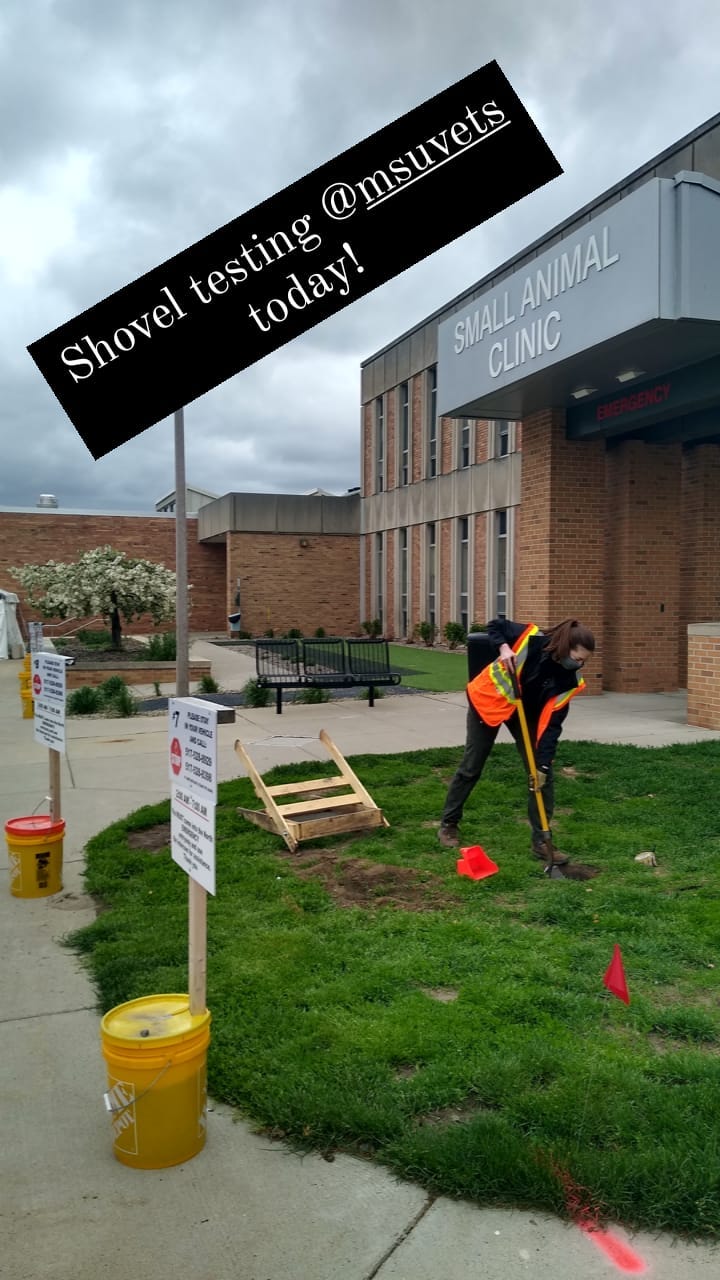CAP Crew 2021: Start of a new field season

This week marks the start of CAP’s 2021 summer field season; we have completed trainings, designed survey and outreach projects, and finished our academic year. This all means we can now get out into in the field! Over the next few months, we will be out on campus working to preserve and share Michigan State University’s below ground cultural history. Unlike last summer, we have approval from the University to have our full crew out and we are all fully vaccinated, so you may see a lot of CAP this year. CAP has a number of mitigation projects planned due to sidewalk work and construction projects. We also have a new outreach project that we will reveal later this summer. This season, our CAP Crew includes new and returning staff: Jack Biggs, Ben Akey, Rhian Dunn, Aubree Marshall, and Amber Plemons. Jeff Burnett is in his first summer as Campus Archaeologist, while CAP Director Dr. Stacey L. Camp will, you guessed it, be directing the CAP work this summer.





The biggest mitigation project we have this year is a Section 106 compliance survey prompted by a construction project that utilizes federal grant funding. “Section 106” refers to a section of the National Historic Preservation Act of 1966, a U.S. federal law, which requires all federal agencies to assess the effects of any project on historic resources and consider public concerns about the historic preservation. What this means for archaeology specifically, is that any project that utilizes federal funds or is under a federal agency must assess if the work will disturb any known or unknown archaeological sites. The Section 106 application is the intensive process through which these effects are assessed. This work includes historical research, reviewing past archaeological surveys, engaging with project developers, and possibly conducting novel archaeological survey.
Working with our partners at MSU’s Infrastructure, Planning, and Facilities (IPF), MSU professor of Interior Design Jessica Flores, and the project developers, CAP successfully submitted a Section 106 application to the Michigan State Historic Preservation Office (SHPO). Approval of the application depended on CAP completing a shovel test survey, an archaeological method which is explained in this great blog post, before construction starts. Once SHPO gave word that IPF could move forward with the project, then even more partners became involved, including the 12 federally recognized Tribal nations in Michigan, the Federal Highway Administration, the Michigan Department of Transportation, and the City of East Lansing. These conversations helped shape our work and will continue throughout the project.
Even when excavations are completed members of CAP will wash, catalog, and analyze artifacts, monitor construction, write the report, and provide updates to various partners. Unlike most of CAPs work over the years, all of this is federally mandated due to the involvement of federal funds and Section 106. So, the pressure is on, but we are sure we can manage!
We are excited to get out into the field and to begin our work – especially with so many exciting projects already on our radar. If you see us on campus give a wave, or like our feathered friends, a honk!


